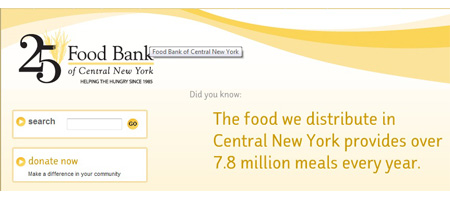For Deena Crowall, federal food stamps are a hassle—but a necessary one.
“I wouldn’t want to say ‘bye’ to it,” said Crowall, 24, of the North Side of Syracuse. She needs the federal Supplemental Nutrition Assistance Program, she said. It’s also known as SNAP or food stamps. Said Crowall, “It helps my family eat and survive.”
Crowell is among a growing number in Central New York and across the country threatened by hunger. Some get help from government programs like food stamps. And many are showing up at food banks to help to feed their families.
The food stamp program is run by the U.S. Department of Agriculture. To qualify for the program, a family of four’s gross income must be less than $2,422 a month. The maximum allotment for a family of four is $668 a month.
Consider these statistics on food stamps and hunger:
- Nationally, about 4.6 million beneficiaries are in the SNAP federal food stamp program, says the federal agriculture department.
- In New York state between 2006 and 2011, according to the nonprofit Food Research and Action Center, the number of people receiving food stamps in New York state climbed 71 percent—from about 1.8 million to about 3 million.
- Across the state, the center calculates, 15.7 percent of New Yorkers receive food stamps.
- In Central New York, the Food Bank of CNY distributed over 4.3 million pounds of food to pantries in 11 counties during its 2009-2010 season, said spokesperson Ania Stilwell. That’s about a 9 percent increase from 2007.
But statistics don’t fully capture the demand for food in pantries, said Mark Dunlea, executive director of the Hunger Action Network of New York State. Often, he said, the pantries quite simply run out of food. Then pantries have to turn away the hungry.
Dunlea cited New York City as an example. The number of people eating at NYC food pantries is up 11 percent since 2010, Dunlea said, but that statistic pales in comparison to the climbing demand for food. “But because food pantries and soup kitchens don’t have enough food, they can only can feed 11 percent more people,” Dunlea said. “The reality is that there’s a lot more demand.”
For food stamp recipients like Deena Crowall of North Side, the food stamps come wrapped in red tape. After submitting their initial papers, applicants wait 45 days to receive food stamps. They must work at least 30 hours a week to stay eligible. And, said Crowall, they often face hours-long waits at the food stamp office.
Crowall and her mother collect $300 monthly in food stamps, the designated amount for a family of two. Crowall is pursuing a degree in criminal justice at Onondaga Community College and, she said, she hopes to become a detective. Because of the food stamps, she said, she feels fortunate that she doesn’t need to go to a food pantry.
“I’m thanking God,” said Crowall, “that I don’t.”
(Annie Knox is a senior majoring in newspaper journalism.)
-30-



